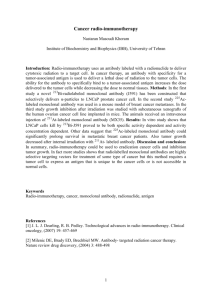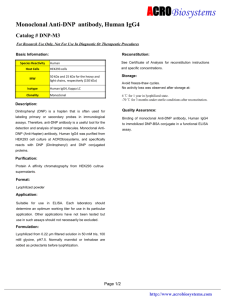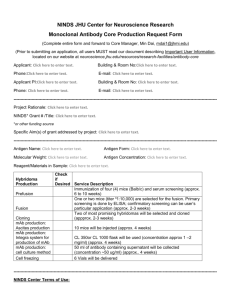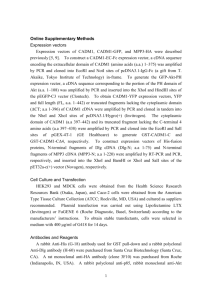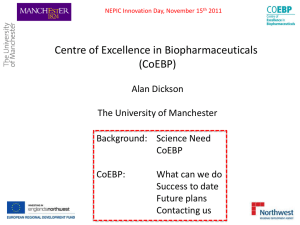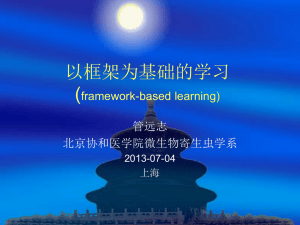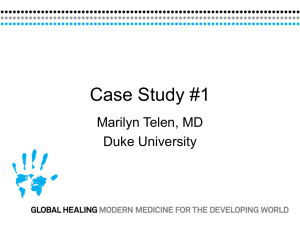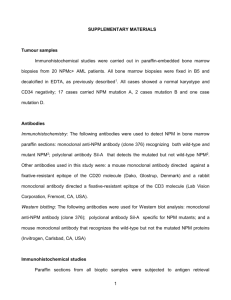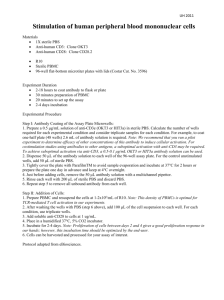Design Project Introduction
advertisement
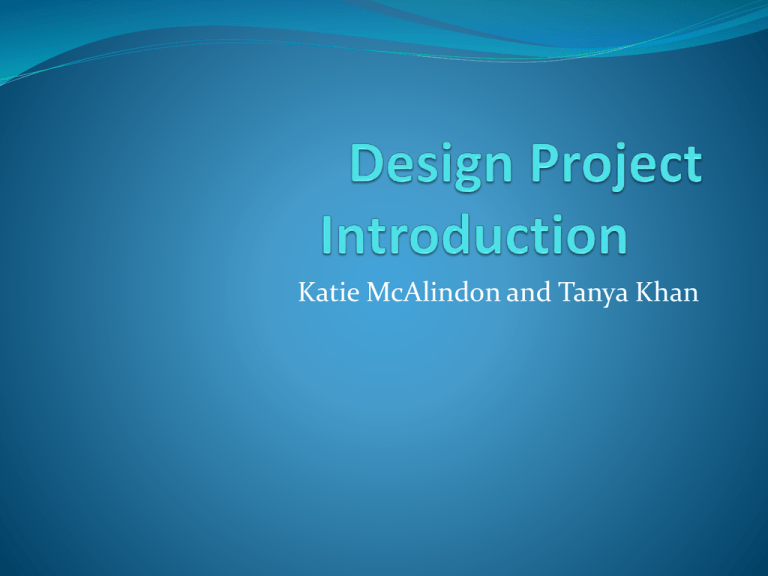
Katie McAlindon and Tanya Khan Agenda Concept and Process Background Report Content Writing/Style Grading Sign up Concept Your group is a company placing a bid to provide a unit operation in a process under construction You will design the most appropriate unit given the conditions available in SuperPro Must be a feasible design (therefore you should consult real companies and try to get real quotes etc) Detailed report will be submitted at a professional standard Project 1: β-galactosidase Production an intracellular enzyme produced by Escherichia coli. mainly used in the utilization of cheese whey. More specifically, immobilized reactors convert lactose found in cheese whey to glucose and galactose, yielding a sweetened product additive to ice cream, egg-nog, yogurt, and other dairy products Another application of b-Gal is in the treatment of milk products. This example analyzes a plant that produces 18,329 kg of b-Gal per year in 216 batches. produces lactose free milk products PROCESS DESCRIPTION Fermentation Section Fermentation media are prepared in a stainless steel tank (V-101), a continuous sterilizer (ST-101), a compressor (G-101) and an absolute air filter (AF-101). Primary Recovery Section The first step of the primary recovery section is cell harvesting to reduce the volume of the broth and remove extracellular impurities; Purification Section Next the product stream is purified by an ion exchange chromatography column (C-101) and then concentrated and further processed. Project 2: Monoclonal Antibody Production This example analyzes the production of a therapeutic monoclonal antibody using animal cell culture. The recipe analyzed produces 19 kg of purified product per batch. Infliximab is a monoclonal antibody against TNF-α. The SuperPro design is not specific to this antibody, but you can assume this is the antibody being produced for your project Approced by the FDA for treatment of psoriasis, Crohn’s disease, rheumatoid arthritis among other autoimmune diseases Works by binding to tumour necrosis factor alpha (a key part of the autoiummune reaction) The exact mechanism is unknown Cases programmed cell death of T-lymphocytes extressing TNF-α A combination of a mouse and human antibody (artificial) (Chimeric monoclonal antibody) Upstream Processing The upstream section is split in two sub-sections, the Inoculum preparation and the Bioreaction section. Downstream Processing Bulk contaminants removed Protein concentrated Sterilized Further processed to final product Monoclonal Antibody Flow Sheet Our Expectations Professionalism and industry standard work are of paramount importance Our recommended Flow: Executive Summary (distilled up to the executive level, less technical content, important conclusions) Tables of Contents and Figures Introduction to the purpose of the project, and your specific unit Discussion of your design Conclusions and Recommendations Executive Summary Brief summary of main conclusions (like an abstract) Written for the business world, not scientists Should focus on economic conclusions and design Sell your design 1 page maximum Introduction to your process/unit What does your unit do? How does it fit into the overall process? Why is it needed? Discuss flows in and out Give a purpose to your proposal Discussion of your Design Pricing and sizing for appropriate capacity Suppliers, quotes Materials Power requirements Safety concerns (back ups, emergency shut off etc) Environmental concerns Waste streams (and destination of waste) Human-power (automated vs manual operation) Maintenance and cleaning Inefficiencies or recommendations This is not just stating facts, but comparing and analyzing and proving that your design is the best Conclusions and Recommendations Do not just restate the executive summary Can be more technical than ES. Draw together all the talking points about your design and the conclusions that were made in each section (i.e. power, safety, environments, costs) Provide recommendations Unprofessional reports will not get a high grade (A) Main Body Each section should have a clear purpose, discussion, and conclusion Just a technical description is not enough, must explain why we care Tangible and real equipment are important, but full quotes should be in an appendix and referenced in your main report. Irrelevant material will be penalized for lack of professionalism Grammar and tense should be correct Consistency in style, format, voice Figures and Appendices Figures should have a fully descript caption to describe what we are seeing and how it is relevant Incomprehensible figures will be penalized Appendices Flow of report can be maintained by referencing quotes in the appendix Appendices must be referenced in the main body and relevant Unnecessary appendices will be penalized Style and Formatting Should be at a level you would submit in industry Marking Scheme Style (/20) Includes professionalism, relevancy, grammar and typos, consistency Technical Content (/60) All design factors considered, supplier found and recommended with good comparison and analysis, prove your design Conclusions (/20) Should be able to be understood without reading the body Should be obvious and succinct Sign up 3 people per group, ONE group contact e-mail BE LEGIBLE! Location: Walter Light 714 Time: To Be Discussed with you! Units will be assigned Friday afternoon through e-mail First come first serve on sign up list An email from us will include: Your project SuperPro flow sheet and your assigned unit A copy of this presentation A SuperPro tutorial to do at your convenience

